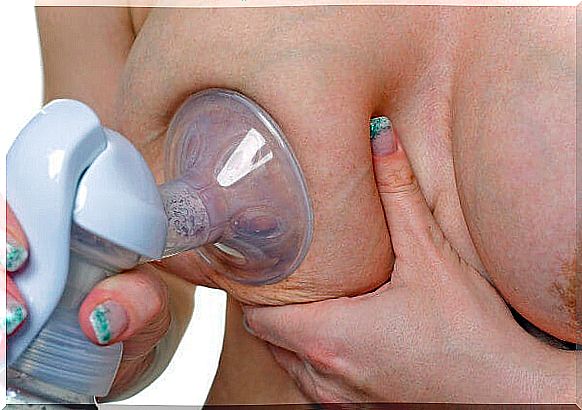What Is Transitional Breast Milk? Information And Tips

Transitional milk is the second stage of breast milk production. Transitional milk production is a combination of colostrum (the first stage of breast milk) and mature breast milk (the third and last stage of breast milk).
Breast milk changes from colostrum to transitional breast milk between the second and fifth day after the baby is born. This is not an exact thing, because it can vary in some mothers, delaying a little more. On the other hand, in women who have had a baby before and have breastfed it earlier, transitional breast milk may start earlier.
The “rise of milk”
During the transition stage the mother may notice that her breasts are filling with breast milk. It is what is commonly known as “milk rise”. The breasts become swollen and heavy, which can be very painful.
If this does not occur before the fifth or sixth day after the baby is born, it is important to consult with the doctor. A delay in the production of breast milk can be dangerous for the baby, since it can become dehydrated and lose weight.
Duration of transitional breast milk
The transitional stage of breast milk lasts until the breast milk is fully mature, which usually occurs 2 to 3 weeks after delivery. Thus, the stage of transitional breast milk between 10 and 14 days.
During these days, the milk will show a very concrete appearance as it is mixed with the colostrum. Colostrum is generally yellow or orange in color and thicker in consistency. Mature breast milk is more watery and is generally white, light yellow, or even bluish in color.
Since transitional milk is a mixture of both types of breast milk, the result can be any combination of these consistencies and colors. Most likely, the top will appear yellow and creamy. But, as the days go by and the milk increases, it becomes more mature, the appearance of the milk will begin to change.
In terms of the amount of milk that is produced, compared to colostrum, of which very small amounts are produced, the supply of transitional breast milk is much higher. In fact, it is easy to go from a colostrum production of 6 or 7 milliliters a day to 500 or 600 milliliters of transitional breast milk daily for the week of baby’s life.

What’s in transitional breast milk?
Transitional breast milk is a combination of all the nutrients and health-promoting substances that make up colostrum and mature breast milk, and contains all the nutrients your baby needs.
As you switch from colostrum to mature milk, the amount of proteins and antibodies in transitional breast milk start to drop a bit. However, the amount of fat, sugars and calories increases. These higher levels of fat, sugar, and calories help the baby regain some of the weight lost in the first few days after birth.
What to do to relieve engorgement during the milk transition phase?
Breast engorgement is a normal and common experience during the breast milk transition stage. It usually begins a few days after delivery and is the result of the sudden increase in the amount of breast milk that is being made.
To relieve engorgement during the transitional milk stage, breastfeed your baby often for the first few days to relieve pressure. However, if the breasts become very engorged, the baby may find it difficult to grasp the nipple. To help the baby, it is good to express a little milk before offering the breast. This softens the breast and makes it easier for the baby to work.

Breast pain can be relieved with cold compresses, but this can be dangerous. As an occasional measure is fine. However, it is much more effective to massage under a hot shower. This will help keep the milk from getting stuck in the ducts. It will also allow some milk to come out, which will be a great relief.
Also, engorgement can cause fever. In any case, if fever occurs and / or pain is very severe, it is advisable to consult a doctor. The pain can be relieved with some pain relievers. Keep in mind that breast engorgement will last for a short time, until milk production adjusts to the baby’s needs.









